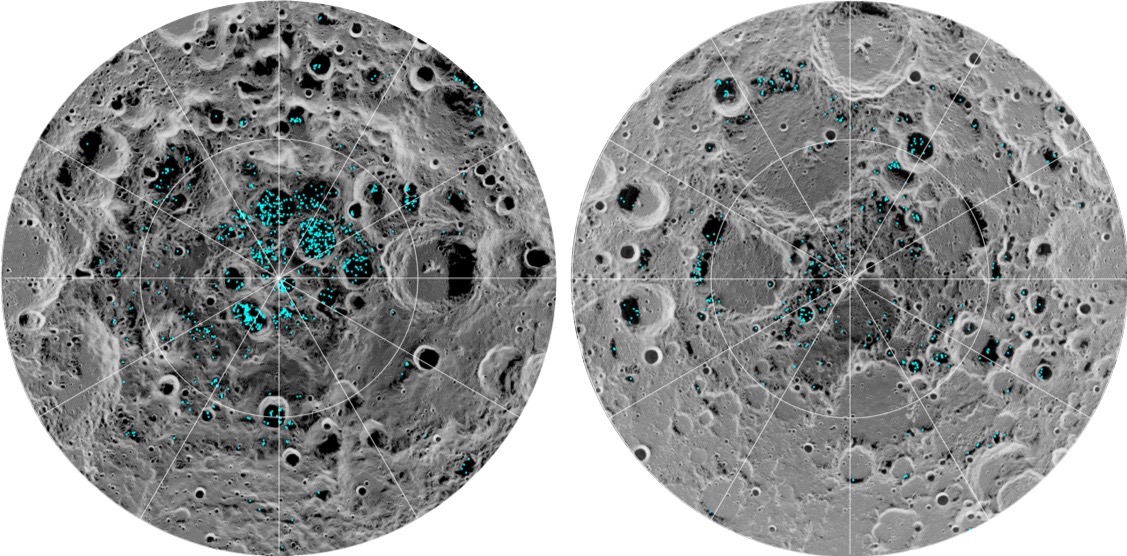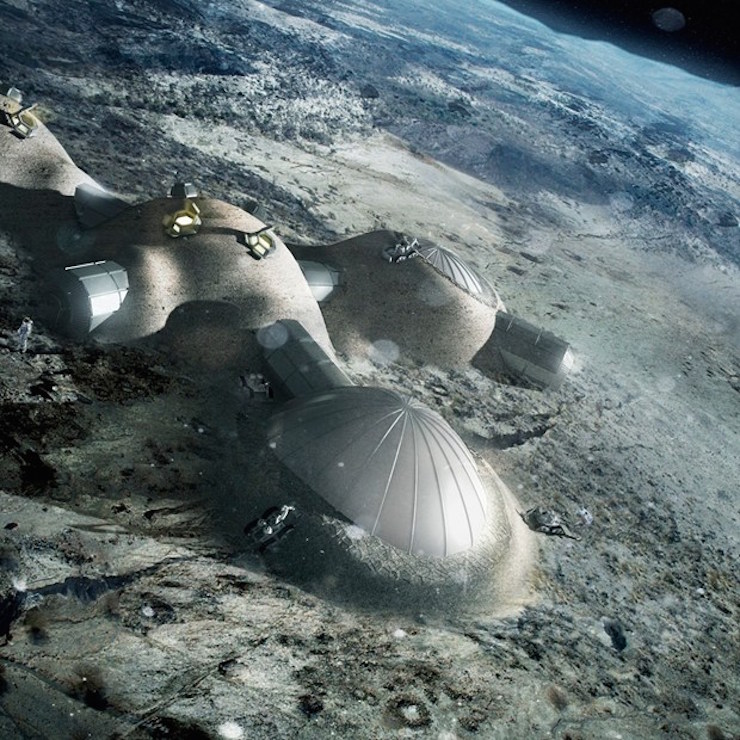
Discovery of Water Ice on the Moon Thrills Lunar Scientists

Scientists who study the moon are beaming about the new discovery of exposed water ice in lunar polar regions.
Using data from NASA's Moon Mineralogy Mapper (M3) spectrometer experiment, a team of researchers — led by Shuai Li iof the University of Hawaii and Brown University — found direct evidence of water ice on the lunar surface, in permanently shadowed areas in polar craters.
M3 flew aboard the Indian Space Research Organization's Chandrayaan-1 spacecraft, which studied the moon from orbit in 2008 and 2009. [The Search for Water on the Moon in Pictures]
Previous data could not confirm the existence of water ice on the moon's surface, but Li et al. provide esolid evidence for its presencee in their study, which was published online this week in the journal Proceedings of the National Academy of Sciences.
Lines of evidence
"This is a critical paper, as it demonstrates that we have four independent lines of evidence that there are surface ice exposures at the lunar poles," explained Clive Neal, a leading lunar expert at the University of Notre Dame.
"With the neutron data, we also know that these deposits extend into the subsurface. Therefore, we now have great maps that we can use to target prospecting surface rovers," Neal, who was not involved with the new study, told Inside Outer Space.
Key details about these lunar ice deposits still need to be worked out, Neal stressed. For example, researchers don't yet know the deposits' size and purity, or thee geomechanical properties of the regolith in which they lie. Such information could be gathered on the ground by robotic explorers.nl.
Get the Space.com Newsletter
Breaking space news, the latest updates on rocket launches, skywatching events and more!
"It is time to get to the surface of the moon and start prospecting!" Neal said.
North and south poles
Angel Abbud-Madrid, Director of the Center for Space Resources at the Colorado School of Mines in Goldeno, also found the new research exciting.
"This new piece of evidence is valuable in that it provides additional confirmation on not just the presence of ice on permanently shadowed regions — which was obtained from previous instruments and from NASA's Lunar CRater Observation and Sensing Satellite (LCROSS) impact mission in 2009 on Cabeus Crater — but of water ice exposed on the surface in various well-defined spots on both the north and south poles," Abbud-Madrid told Inside Outer Space.
"These data are of importance for prospecting and in-situ resource utilization operations related to water extraction from the lunar poles," Abbud-Madrid added.
The locations of surface-exposed water ice described in the new study, he said, could be used to select potential sites for more extensive ground-truth exploration to qualify and quantify the ice content of these regions.
"This information is crucial to select the most appropriate extraction method to be used for ice exposed on the surface, as opposed to techniques to drill and recover subsurface ice," Abbud-Madrid concluded.
Lunar bases?

The new research provides "robust evidence" for the presence of water ice on the moon's surface, noted James Head, of the Department of Earth, Environmental and Planetary Sciences at Brown University in Providence, Rhode Island.
"If ice is at the surface, this means that much more could be buried at depth and covered and preserved below insulating soil, or diffused into and frozen in the soil layers," Head said.
"This is very exciting news, and provides significant impetus for future international landings in the polar regions to drill and return samples of this ice," he added. "Ice deposits in significant quantities on the moon could provide resources for future lunar bases and for fuel for future human exploration of deep space."
Leonard David is author of "Mars: Our Future on the Red Planet," published by National Geographic. The book is a companion to the National Geographic Channel series "Mars." A longtime writer for Space.com, David has been reporting on the space industry for more than five decades. Follow us @Spacedotcom, Facebook or Google+. This version of the story published on Space.com.
Join our Space Forums to keep talking space on the latest missions, night sky and more! And if you have a news tip, correction or comment, let us know at: community@space.com.

Leonard David is an award-winning space journalist who has been reporting on space activities for more than 50 years. Currently writing as Space.com's Space Insider Columnist among his other projects, Leonard has authored numerous books on space exploration, Mars missions and more, with his latest being "Moon Rush: The New Space Race" published in 2019 by National Geographic. He also wrote "Mars: Our Future on the Red Planet" released in 2016 by National Geographic. Leonard has served as a correspondent for SpaceNews, Scientific American and Aerospace America for the AIAA. He has received many awards, including the first Ordway Award for Sustained Excellence in Spaceflight History in 2015 at the AAS Wernher von Braun Memorial Symposium. You can find out Leonard's latest project at his website and on Twitter.









